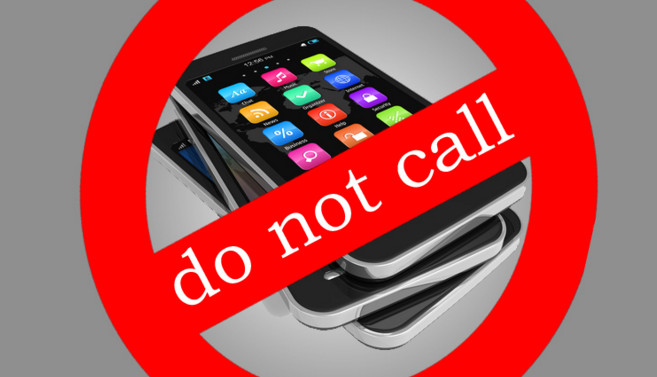The relentless buzz of a telemarketing call can disrupt your day and leave you feeling frustrated. The Do Not Call Registry (DNCR) offers a valuable weapon in your fight against unwanted sales pitches. This in-depth guide delves into the intricacies of the DNCR, exploring its purpose, registration process, limitations, and strategies for maximizing its effectiveness.

Unveiling the Do Not Call Registry: A Lifeline Against Telemarketing Intrusion
The Do Not Call Registry, established by the Federal Trade Commission (FTC) in the United States, empowers consumers to take control of their phones and reduce the number of unsolicited telemarketing calls they receive. Here’s a breakdown of its core functions:
- Purpose: The DNCR serves as a national database of phone numbers where consumers can register their desire to opt-out of most telemarketing calls. By registering, you express your preference not to be contacted by telemarketers trying to sell you products or services.
- Who Can Register? The DNCR welcomes most residential phone numbers, including landlines, mobile phones, and Voice over Internet Protocol (VoIP) phones. Business phone numbers are generally not eligible for registration.
Registering for Peace of Mind: Multiple Ways to Join the Do Not Call List
The DNCR offers three convenient ways for you to register your phone number:
- Online Registration: Visit the official Do Not Call Registry website at https://www.donotcall.gov/ and follow the simple online instructions. This is the quickest and most popular method.
- Telephone Registration: Call 1-888-382-1222 (TTY: 1-866-290-4236) from the phone number you wish to register. Follow the automated prompts to complete the registration process.
- Paper Registration: Download a paper registration form from the Do Not Call Registry website, fill it out completely, and mail it to the address provided. While less convenient than the other options, this method caters to those who prefer a paper-based approach.
Important Note: Regardless of the chosen method, allow up to 31 days for your registration to take full effect. During this period, you might still receive some telemarketing calls from companies who haven’t yet updated their lists.
Understanding the Scope of the Do Not Call Registry: What Calls Are (and Aren’t) Covered
While the Do Not Call Registry offers a valuable tool for curbing unwanted telemarketing calls, it’s essential to understand its limitations. Here’s a breakdown of what type of calls are covered and what falls outside its scope:
- Covered Calls: The DNCR primarily applies to telemarketing calls from companies selling products or services. By registering, you express your disinterest in receiving such calls.
- Non-Covered Calls: The DNCR does not cover certain types of calls, including:
- Political calls from campaigns or committees
- Calls from charitable organizations
- Debt collectors contacting you about repaying outstanding debts
- Survey calls conducted by legitimate research organizations
Important Note: The Do Not Call Registry is not a foolproof system. Some unscrupulous telemarketers might disregard the list or utilize illegal robocalls to bypass regulations. Here are some additional points to consider:
- Registration is Free: Beware of scammers who try to charge you for registering your number on the Do Not Call List. Registration through the FTC website or phone number is completely free.
- Maintaining Your Registration: Your Do Not Call registration remains valid indefinitely. However, if you change your phone number, you’ll need to re-register with the new number.

Strategies for Enhanced Do Not Call List Effectiveness: Taking Control of Your Phone
While registering for the Do Not Call List is a crucial step, here are some additional strategies to further minimize unwanted telemarketing calls:
- Scrutinize Robocalls: Be wary of answering calls from unknown numbers, especially those with automated dialers or pre-recorded messages. These are likely robocalls, and answering them might confirm your number is active and lead to more calls.
- Consider Call Blocking Apps: Explore reputable call blocking apps that can identify and block known telemarketing numbers. These apps can be a valuable additional layer of protection.
- Report Violators: If you receive a telemarketing call after your number has been on the Do Not Call Registry for more than 31 days, report the call to the FTC at https://www.donotcall.gov/. Reporting helps the FTC track violators and enforce Do Not Call provisions.
The Future of the Do Not Call List: Evolving Technologies and Consumer Protection
The Do Not Call Registry plays a vital role in consumer protection, but the telemarketing landscape is constantly evolving. Here’s a glimpse into potential future developments:
- Combating Robocalls: The FTC is actively exploring ways to combat the growing problem of robocalls. This could involve stricter regulations for telemarketers, technological advancements to identify and block robocalls, or increased enforcement actions against violators.
- Do Not Call Registry 2.0: The DNCR might be enhanced with features like online account management, allowing users to easily update their information or report violations directly through the website.
- Integration with Mobile Carriers: Collaboration between the FTC and mobile phone carriers could lead to improved call filtering and blocking features built directly into mobile phone plans.
- Consumer Education: Increased public awareness campaigns might educate consumers about the Do Not Call Registry, its limitations, and additional strategies for combating unwanted calls.
By staying informed about these potential advancements and utilizing the strategies outlined in this guide, you can empower yourself to take control of your phone and minimize the disruption caused by unwanted telemarketing calls.
Conclusion: Ringing in a New Era of Control
The Do Not Call Registry offers a valuable tool for consumers in the fight against telemarketing intrusion. While it has limitations, understanding its scope, registration process, and complementary strategies can significantly reduce the number of unwanted calls you receive. As technology evolves and consumer protection efforts continue, we can expect the Do Not Call Registry to adapt and offer even greater control over your phone experience.
This comprehensive guide has equipped you with the knowledge and resources necessary to navigate the Do Not Call List effectively. By registering your number, utilizing additional call control measures, and staying informed about future developments, you can reclaim your phone and ring in a new era of control over unwanted telemarketing calls.